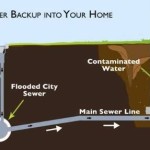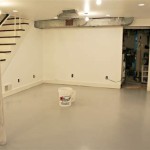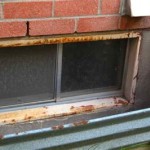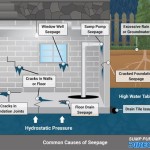How to Plumb a Bathroom in a Basement
Creating a bathroom in your basement can add significant value to your home and provide added convenience for your family. However, plumbing a bathroom can be a daunting task, especially if you're not familiar with plumbing systems. This guide will provide you with comprehensive information and step-by-step instructions to ensure successful plumbing for your basement bathroom.
1. Planning and Preparation
Begin by creating a floor plan for the bathroom, determining the placement of fixtures, and ensuring it meets building codes. Determine the location of the water supply and drainage lines, which may require extending them from the main plumbing system. Gather all necessary materials, including pipes, fittings, drains, toilets, sinks, faucets, and showerheads.
2. Rough Plumbing
Install the main water supply line and drain line for the bathroom. Run the supply lines for the sink, toilet, and shower. Use copper, PEX, or CPVC pipes for water supply and PVC pipes for drains. Secure the pipes using hangers and supports. Install the drain pipes for the sink, toilet, and shower, ensuring they slope correctly to promote proper drainage.
3. Fixture Installation
Connect the toilet to the drain and water supply lines. Carefully level and secure the toilet to the floor. Install the sink by connecting it to the drain and supply lines. Mount the sink to the countertop or wall and connect the faucet. For the shower, assemble the showerhead, shower arm, and mixer valve. Connect the shower to the water supply and drain lines.
4. Vent Installation
Vents are essential for proper plumbing function. Install vent pipes on the drain lines for the toilet, sink, and shower. These pipes allow air to circulate in the system, preventing the formation of traps in the lines. Roof vents must connect to each vent pipe to extend them through the roof, releasing gas and odors from the drains.
5. Water Heater Consideration
If your existing water heater is located far from the basement bathroom, consider installing a dedicated water heater or a booster to provide adequate hot water for your bathroom. This will ensure that you have sufficient hot water for showers and other uses.
6. Electrical Connections
While not directly related to plumbing, it's important to ensure that the bathroom has proper electrical connections for lights, fans, and any other electrical fixtures. Hire a qualified electrician to install electrical wiring, switches, and outlets.
7. Testing and Inspection
Once the plumbing is complete, thoroughly test the system for leaks. Open the faucets, flush the toilet, and run the shower to check for any water flow issues. Inspect all connections and joints for any leaks or drips. If necessary, adjust or tighten any fittings to resolve any issues.
Conclusion
Plumbing a bathroom in a basement requires careful planning, attention to detail, and an understanding of plumbing systems. By following these steps and seeking professional assistance when necessary, you can successfully create a functional and aesthetically pleasing bathroom in your basement.
How To Plumb A Basement Bathroom Diy Family Handyman

Basement Bathroom Plumbing Planning For A Below Grade Lavatory
How To Install A Bathroom In Basement Do You Handle The Plumbing For It Quora

How To Finish A Basement Bathroom Pex Plumbing

Plumbing Diagram Basement Rev Bathroom

Should You Install A Bathroom In Your Finished Basement Design Plumbing

Basement Toilet Pump Plumbing Inspections Internachi Forum
Floor Broke Up Rough In Plumb For Basement Bath Diy Home Improvement Forum

Basement Bathroom Plumbing Planning For A Below Grade Lavatory

A Basement Bathroom Renovation Merrypad
See Also








